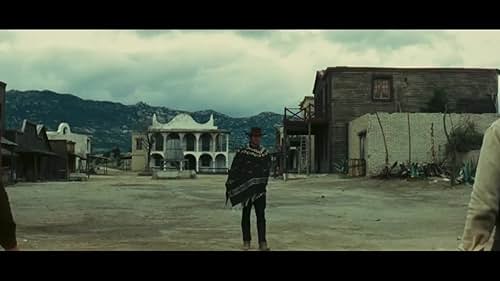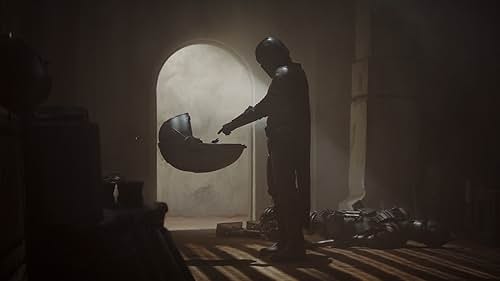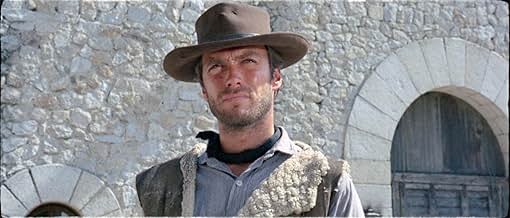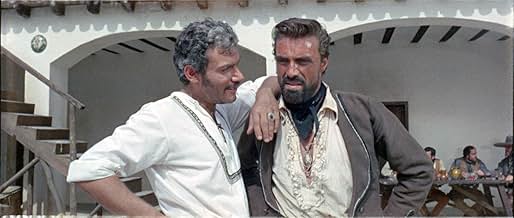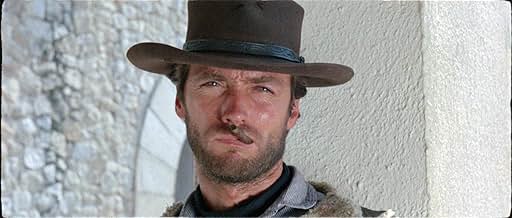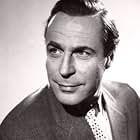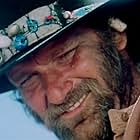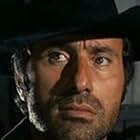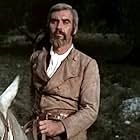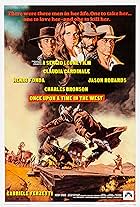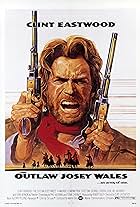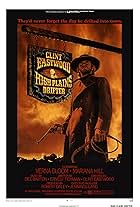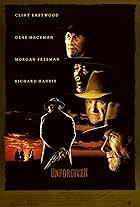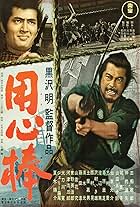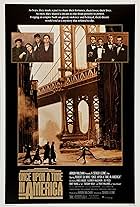A wandering gunfighter plays two rival families against each other in a town torn apart by greed, pride, and revenge.A wandering gunfighter plays two rival families against each other in a town torn apart by greed, pride, and revenge.A wandering gunfighter plays two rival families against each other in a town torn apart by greed, pride, and revenge.
- Awards
- 1 win & 5 nominations
Gian Maria Volontè
- Ramón Rojo
- (Italian, English version)
- (as John Wells, Johnny Wels)
Wolfgang Lukschy
- John Baxter
- (as W. Lukschy)
Sieghardt Rupp
- Esteban Rojo
- (as S. Rupp)
Joseph Egger
- Piripero
- (as Joe Edger)
José Calvo
- Silvanito
- (as Jose Calvo)
Margarita Lozano
- Consuelo Baxter
- (as Margherita Lozano)
Daniel Martín
- Julián
- (as Daniel Martin)
Benito Stefanelli
- Rubio
- (as Benny Reeves)
Mario Brega
- Chico
- (as Richard Stuyvesant)
Bruno Carotenuto
- Antonio Baxter
- (as Carol Brown)
Aldo Sambrell
- Rojo gang member
- (as Aldo Sambreli)
Raf Baldassarre
- Juan De Dios
- (uncredited)
Luis Barboo
- Baxter Gunman 2
- (uncredited)
Frank Braña
- Baxter Gang Member
- (uncredited)
José Canalejas
- Rojo Gang Member
- (uncredited)
Storyline
Did you know
- TriviaClint Eastwood's contract for Rawhide (1959) prohibited him from making movies in the United States while on break from the series. However, the contract did allow him to accept movie assignments in Europe.
- GoofsWhen the Rojo gang ambush the Mexican army unit the gun Ramon uses to kill all the troops is a Mitrailleuse volley gun. Each barrel had to be laboriously loaded by hand before all barrels were fired together in a single volley. However, the film shows the volley gun being used as a form of machine gun. The only machine gun around at the time was the hand-cranked Gatling gun which the soundtrack also seems to depict.
A volley gun could fire each round individually using a hand crank. However, Ramon clearly has both hands on the (incorrect) twin grips at all times.
- Alternate versionsThe original British theatrical release had about 4 minutes cut by the BBFC. Many closeup shots of bloodied faces and bodies (including the body of Chico) were removed, as well as a shot of Ramon dripping blood from his mouth. The main cuts, however, were to the beating up of Eastwood, which lost a hand stomping scene, and extensive cuts to the assault on the Baxters' house which was cut to shorten the overall sequence by removing all shots of men on fire, and the shooting of Consuela Baxter. (The cut version removes the shot of her falling backwards.) The 1999 MGM video and DVD releases are fully uncut and the same as the USA DVD release.
- ConnectionsFeatured in The Man with No Name (1977)
Featured review
When Per un pungo di dollari, or A Fistful Of Dollars, was released in the mid-1960s, the term "Spaghetti Western" was coined as a putdown to these brazen new films that dared to recreate the Wild West in a place as far away as Italy. However, the last laugh was shared by the Italian directors, whose new style of portraying Colonial America in a realistic style rather than the romanticised way that was characteristic of John Wayne and his contemporaries will be remembered long after the films of the romanticised style are no more.
The plot is indescribably simple, as Clint Eastwood simply wanders into a town where gang warfare has stripped the economy to the point where only the local undertaker makes a profit and turns the two warring families against one another. Sergio Leone's best-known trademark, his dynamic use of widescreen ratios, comes to the fore here as Clint shares a film frame with no less than four of his enemies, all of whom have plenty to say to him and vice versa. This is one film where a pan and scan transfer is purely and simply vandalism. Some of the dialogue that is included here absolutely takes the cake for cleverness and wit, too. Asking four gunslingers to apologise to a horse, well, if it wasn't a man as famous for playing a gunslinger as Clint Eastwood, it'd be ridiculous.
Transplanting old Samurai legends into the Wild West works well, as you can see here. Simply having an old mercenary who travels the land in search of wrongs to right and battles to be fought makes the story a lot more compelling than the Westerns where we are told every iota of the characters' motivations in the hope that it will give them some depth. The element of the main hero not getting involved in every scuffle that the bad guys cause, our semi-nameless hero's ignoring a drunken thug shooting at a little boy being the most obvious example, was another master stroke, one that got Eastwood involved in doing the film to begin with. The confrontation at the end of the film works well, too, with pyrotechnics exploding all over the picture in a bright display that keeps the film powerful and yet focused at the same time.
All in all, Per un pungo di dollari gets nine out of ten from me. The lack of any interesting support characters does dull the story a little, but this mistake was quickly rectified in the two sequels. The addition of Lee Van Cleef also worked well, but in this effort, it's all Clint Eastwood, and while the rest of the cast are nowhere near as interesting, it's all a better watch than anything the Americans were lumping out at the time.
The plot is indescribably simple, as Clint Eastwood simply wanders into a town where gang warfare has stripped the economy to the point where only the local undertaker makes a profit and turns the two warring families against one another. Sergio Leone's best-known trademark, his dynamic use of widescreen ratios, comes to the fore here as Clint shares a film frame with no less than four of his enemies, all of whom have plenty to say to him and vice versa. This is one film where a pan and scan transfer is purely and simply vandalism. Some of the dialogue that is included here absolutely takes the cake for cleverness and wit, too. Asking four gunslingers to apologise to a horse, well, if it wasn't a man as famous for playing a gunslinger as Clint Eastwood, it'd be ridiculous.
Transplanting old Samurai legends into the Wild West works well, as you can see here. Simply having an old mercenary who travels the land in search of wrongs to right and battles to be fought makes the story a lot more compelling than the Westerns where we are told every iota of the characters' motivations in the hope that it will give them some depth. The element of the main hero not getting involved in every scuffle that the bad guys cause, our semi-nameless hero's ignoring a drunken thug shooting at a little boy being the most obvious example, was another master stroke, one that got Eastwood involved in doing the film to begin with. The confrontation at the end of the film works well, too, with pyrotechnics exploding all over the picture in a bright display that keeps the film powerful and yet focused at the same time.
All in all, Per un pungo di dollari gets nine out of ten from me. The lack of any interesting support characters does dull the story a little, but this mistake was quickly rectified in the two sequels. The addition of Lee Van Cleef also worked well, but in this effort, it's all Clint Eastwood, and while the rest of the cast are nowhere near as interesting, it's all a better watch than anything the Americans were lumping out at the time.
- mentalcritic
- Sep 21, 2001
- Permalink
Details
Box office
- Budget
- $200,000 (estimated)
- Gross US & Canada
- $14,500,000
- Gross worldwide
- $14,516,248
- Runtime1 hour 39 minutes
- Color
- Sound mix
- Aspect ratio
- 2.35 : 1
Contribute to this page
Suggest an edit or add missing content


